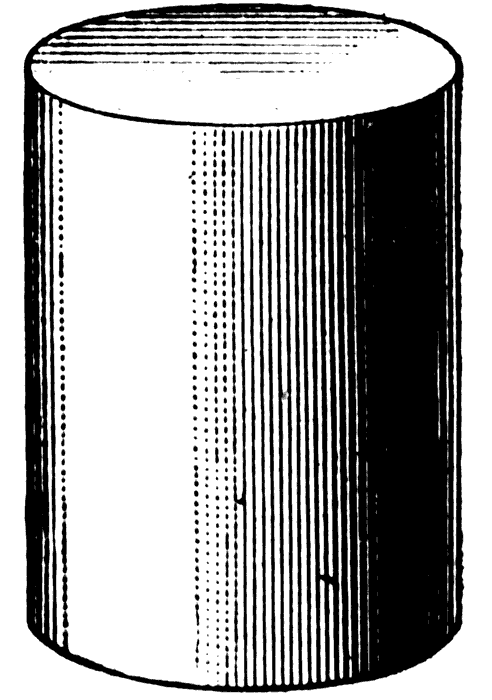 |
American Literature: Romanticism research assignment Student Research Submissions 2016 Research Post 1 |
 |
Michael Osborne
25
October 2016
Men
without Enough Past: Exploring Hawthorne’s Influence on H.P. Lovecraft
I have been a fan
of H.P. Lovecraft for the entirety of my adult life and am continually baffled
that he can still be considered obscure despite his vast influence on modern
authors and filmmakers. His work has
spawned numerous imitations and adaptations in both book and film, as well as
inspired role-playing games, video games, film festivals, and conventions.
When we began studying the Gothic in class, its influence on Lovecraft’s
work was readily apparent to me. I grew
curious about the evolution of the Gothic from American Romanticism to the
cosmic horror of Lovecraft. I knew that
he held a special reverence for Edgar Allan Poe and that Poe’s work heavily
influenced his own. I didn’t know much
about Lovecraft’s other influences, so that is where I began my research.
Lovecraftian critics generally agree that Lovecraft’s major influences include
Poe, Arthur Machen, Lord Dunsany, and Nathaniel Hawthorne.
I was puzzled by Hawthorne’s inclusion in that list.
Considering Hawthorne’s didacticism and his concern with “exploring the
moral nature of man, with guilt and sin,” it was hard for me to imagine
Hawthorne as a major influence on Lovecraft, whose own work, “in affecting a
cosmic viewpoint, was indifferent to man and his moral plight;” an indifference
which leaves humans “entirely subordinate to mood and supernatural effect”
(Cannon 162). I couldn’t see how an
author primarily concerned with human morality could possibly influence an
author whose work is, at best, indifferent to such issues.
Therefore, I decided to focus on
Hawthorne for my first post; specifically, I wanted to discover what Hawthorne’s
influence was on Lovecraft, and to what extent that influence is detectable in
his work.
I quickly
discovered that Lovecraft was extremely well-versed in Hawthorne’s work, as can
be seen in his essay, Supernatural Horror
in Literature (1927). He held
Hawthorne in very high regard and considered
The House of Seven Gables “New
England’s greatest contribution to weird literature” (Lovecraft,
Supernatural).
In this essay, he wrote that the
“heritage of American weirdness” was Hawthorne’s to “a most intense degree, and
he saw a dismal throng of vague spectres behind the common phenomena of life.”
Though supernatural horror was not Hawthorne’s goal, Lovecraft believed that
“its impulses were so deeply woven into [Hawthorne’s] personality that he cannot
help suggesting it with the force of genius when he calls upon the unreal world
to illustrate the pensive sermon he wishes to preach” (Lovecraft,
Supernatural).
Though Lovecraft
read a great deal of Hawthorne’s work and clearly respected him, it was still
surprising to learn that Hawthorne’s influence is responsible for a key element
in Lovecraft’s most beloved creation, the Cthulhu Mythos.
As we’ve learned in class, one of the difficulties for nineteenth-century
American Gothic writers was setting. At
that time, America was still considered a young nation, and as such, did not
provide the depth of history for setting as could be found in Europe.
Therefore, many American Gothic writers chose to set their stories in the
wilderness, in Europe, or in an indistinct location, as we see in Irving’s “Rip
Van Winkle,” and Poe’s “Ligeia” and “The Fall of the House of Usher,”
respectively. Hawthorne, however, did not
follow this trend, and set many of his stories in or around cities in New
England, as seen in The House of Seven
Gables and The Scarlet Letter.
Due to the many
primeval elements in his stories, Lovecraft encountered “the same problem that
Nathaniel Hawthorne had confronted seventy years earlier”; therefore, like
Hawthorne, Lovecraft had to “discover a usable American past that suited his
necessity for archaicism” (Shreffler 19).
Donald R. Burleson concludes that in searching for an appropriately archaic
American past, Lovecraft “found in Hawthorne a fascination with the shadowy side
of New England history and culture,” so much so that “Lovecraft came to prefer
setting horror tales in his native region, rather than in such ‘stock’ settings
as eastern European castles and the like,” a preference that is “largely due to
Hawthorne” (217-18). J. Vernon Shea
agrees with Burleson about this facet of Hawthorne’s influence, stating that
“Lovecraft was quite at home in Hawthorne’s New England, and it was presumably
Hawthorne’s example which turned Lovecraft’s attention to writing about the
places and the houses which he knew intimately” (116).
Therefore, facing the same difficulty with setting as earlier American
Gothic writers, Lovecraft eschewed the models established in European Gothic
stories and, following Hawthorne’s example, set his stories in his native New
England.
Though both
Hawthorne and Lovecraft set a large number of their stories in New England,
there is one significant difference in their settings.
Hawthorne used established (or Romantic variants) of actual cities in his
work, and while Lovecraft did set some of his stories in real locations, he
eventually created fictitious towns in New England as the base setting for his
stories, including his most significant work, the Cthulhu Mythos.
Most of the Mythos stories occur in or focus on denizens of the towns
that Lovecraft devised, providing a continuity that transforms the stories from
a series of interconnected tales into a cohesive mythology.
Lovecraft, like Hawthorne, used “colonial New England as his fantastic
frame of reference,” a decision that “gave rise to Lovecraft’s inventing the
wild, desolate villages of Arkham, Kingsport, Dunwich, and Innsmouth as fictive
locales. And it is these settings, as
much as any monster-god he created, that have captured the imagination of his
followers” (Shreffler 30).
Taking the time
to read even a relatively small sample of the criticism concerning H.P.
Lovecraft reveals a clear connection between Lovecraft and Hawthorne.
Considering that Lovecraft once described himself as a man whose life lay
“not among people but among
scenes,” it is easy to comprehend the
paramount significance of setting in his stories (Lovecraft,
Lord 187).
His choice to set a large number of his weird tales in his native New
England can be directly attributed to the influence and example of Nathaniel
Hawthorne. For my second post, I plan to
investigate Burleson’s belief that Lovecraft also drew inspiration for the
dreaded Necronomicon from Hawthorne as well.
For the uninitiated, the Necronomicon is a nefarious grimoire that
details the Old Ones and methodology for interacting with them.
It is a gross oversimplification, but the Old Ones can be considered the
bad guys of the Cthulhu Mythos. The idea
that the inspiration for the Necronomicon could be due to Hawthorne is truly
intriguing, because while Lovecraft’s fictitious towns provide the backbone for
the Cthulhu Mythos, it is the Necronomicon that is its black, beating heart.
Could we have Hawthorne to thank for that part of the Mythos as well?
Works
Cited
Burleson, Donald R. H. P. Lovecraft: A
Critical Study. Greenwood, 1983. Print.
Cannon, Peter. “H. P. Lovecraft in Hawthornian Perspective.”
H. P. Lovecraft: Four Decades of
Criticism. Ed. S. T. Joshi. Ohio UP, 1980. 161-65. Print.
Lovecraft, H. P. Lord of a Visible World:
An Autobiography in Letters. Ed. S. T. Joshi and David E. Schultz. Ohio UP,
2000. Print.
---. Supernatural Horror in Literature.
The H. P. Lovecraft Archive. N.p. 20
Oct. 2009. Web. 21 Oct. 2016.
http://www.hplovecraft.com/writings/texts/essays/shil.aspx
Shea, J. Vernon. “On the Literary Influences Which Shaped Lovecraft’s Works.”
H. P. Lovecraft: Four Decades of
Criticism. Ed. S. T. Joshi. Ohio UP, 1980. 113-39. Print.
Shreffler, Philip A. The H.P. Lovecraft Companion. Greenwood, 1977. Print.
|
|
|
|


